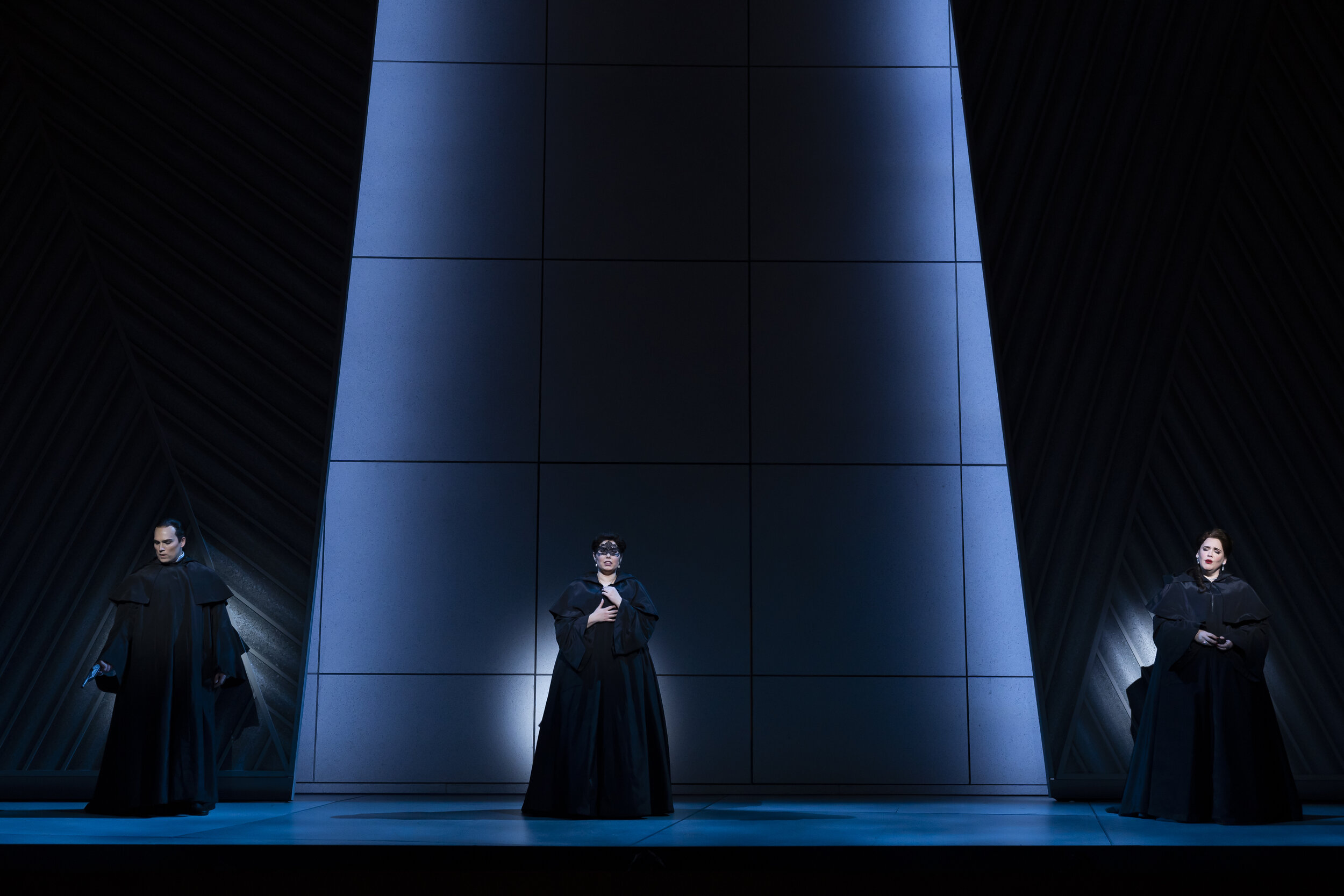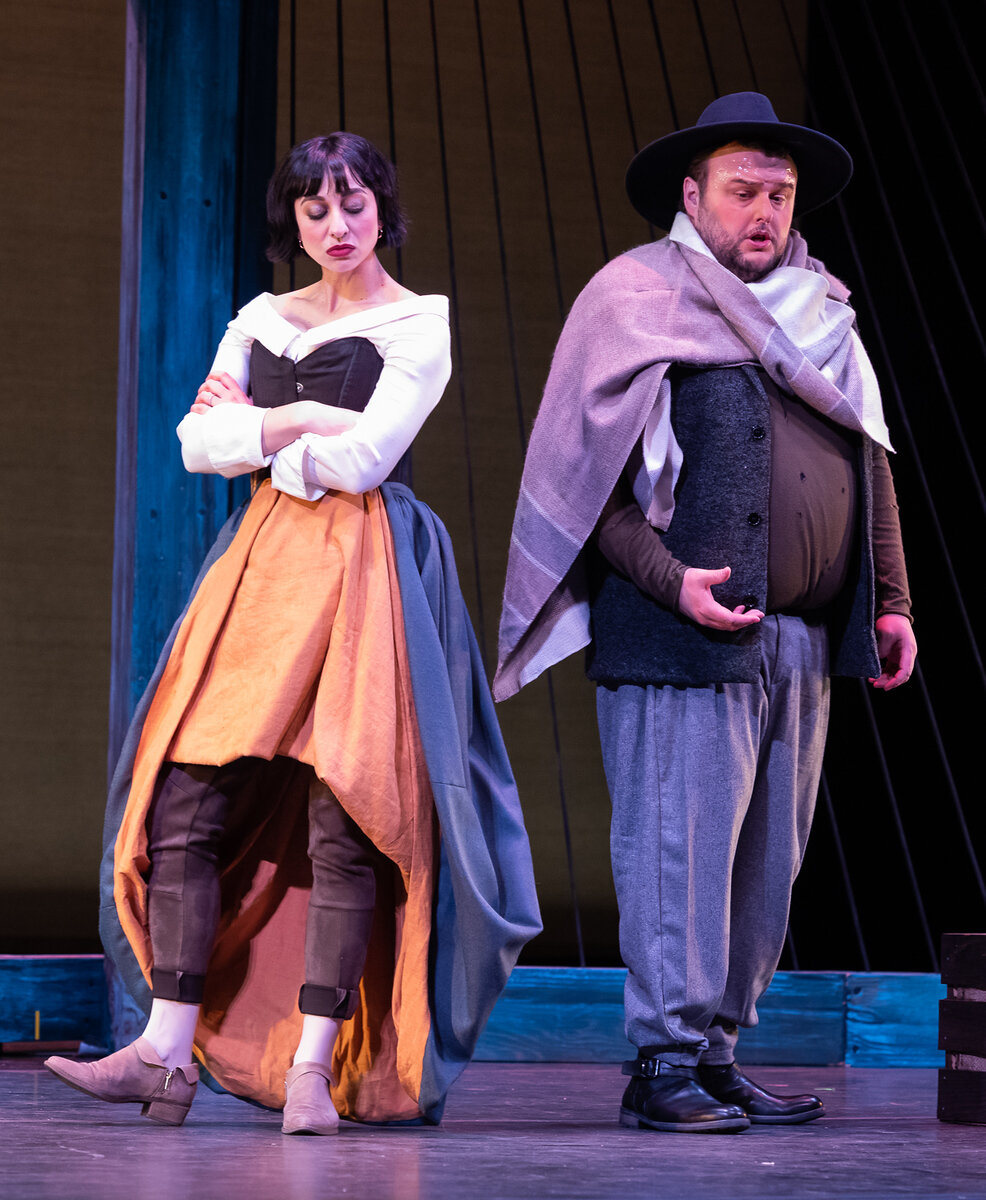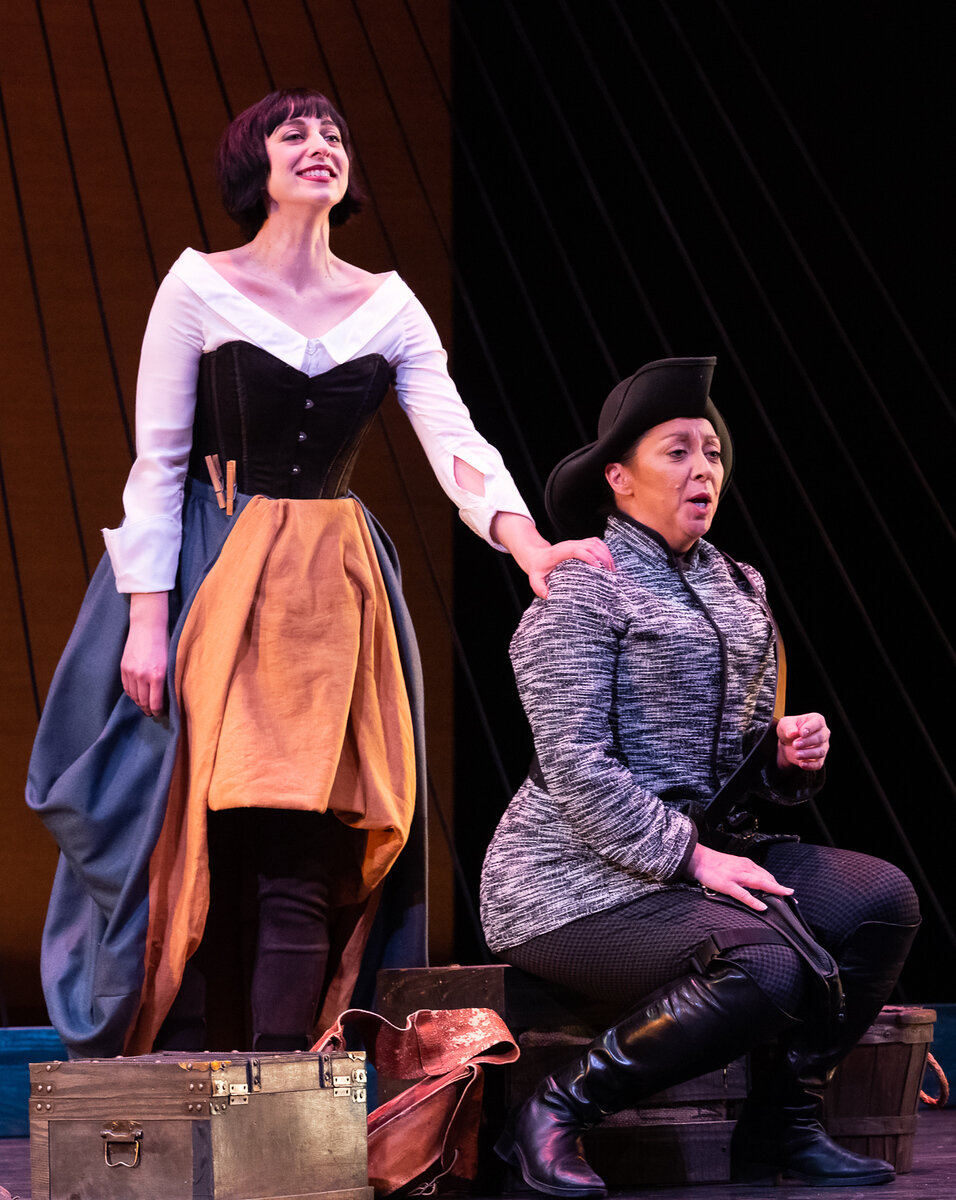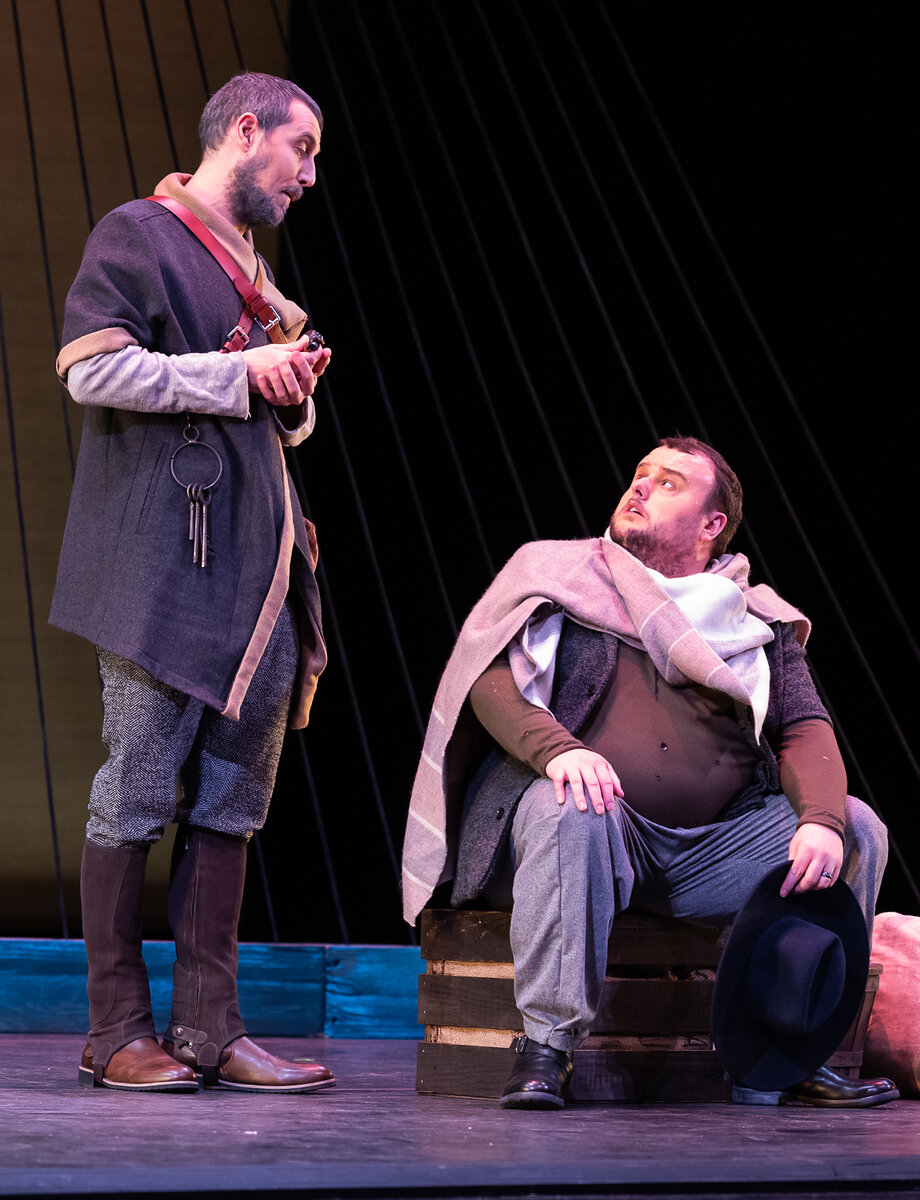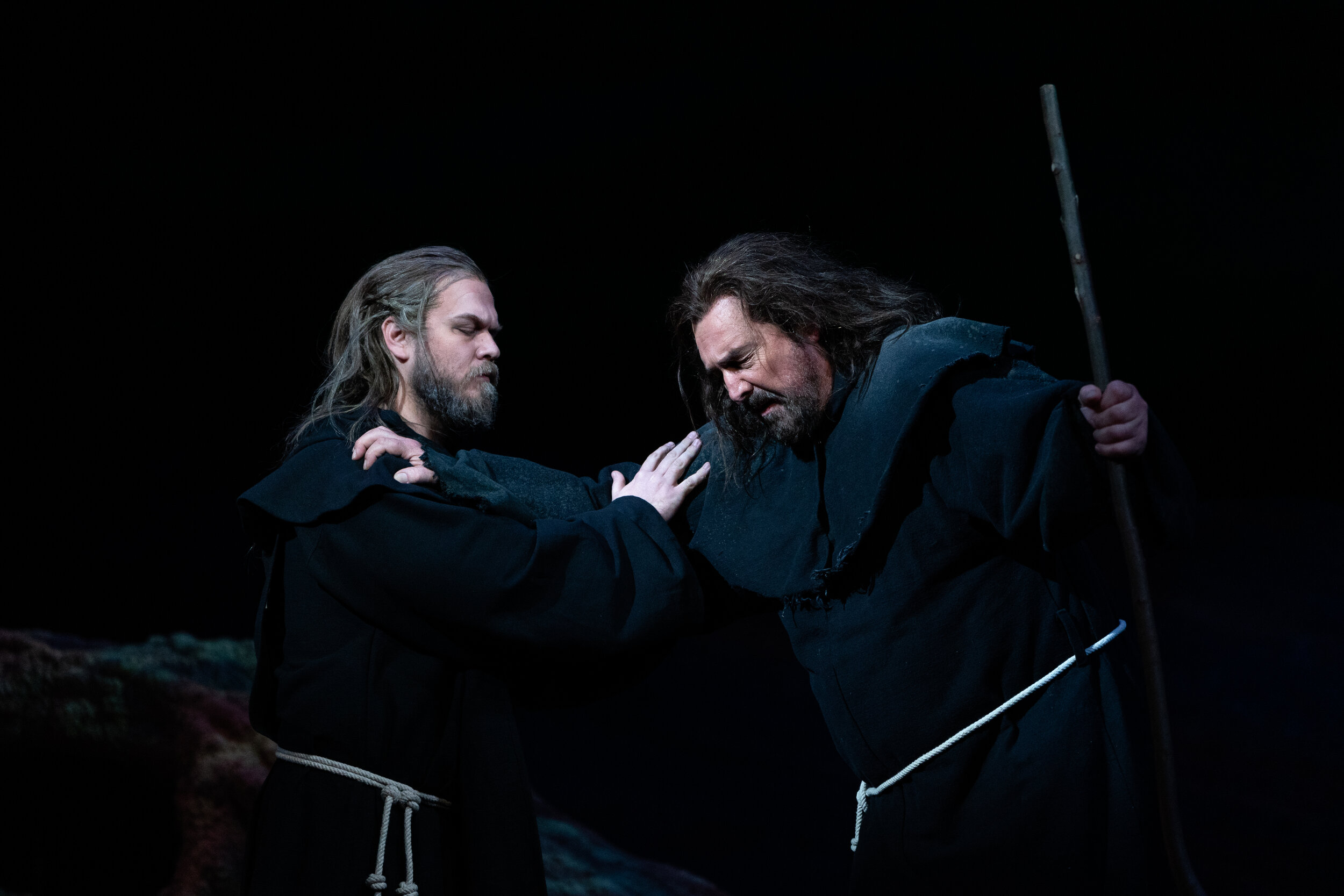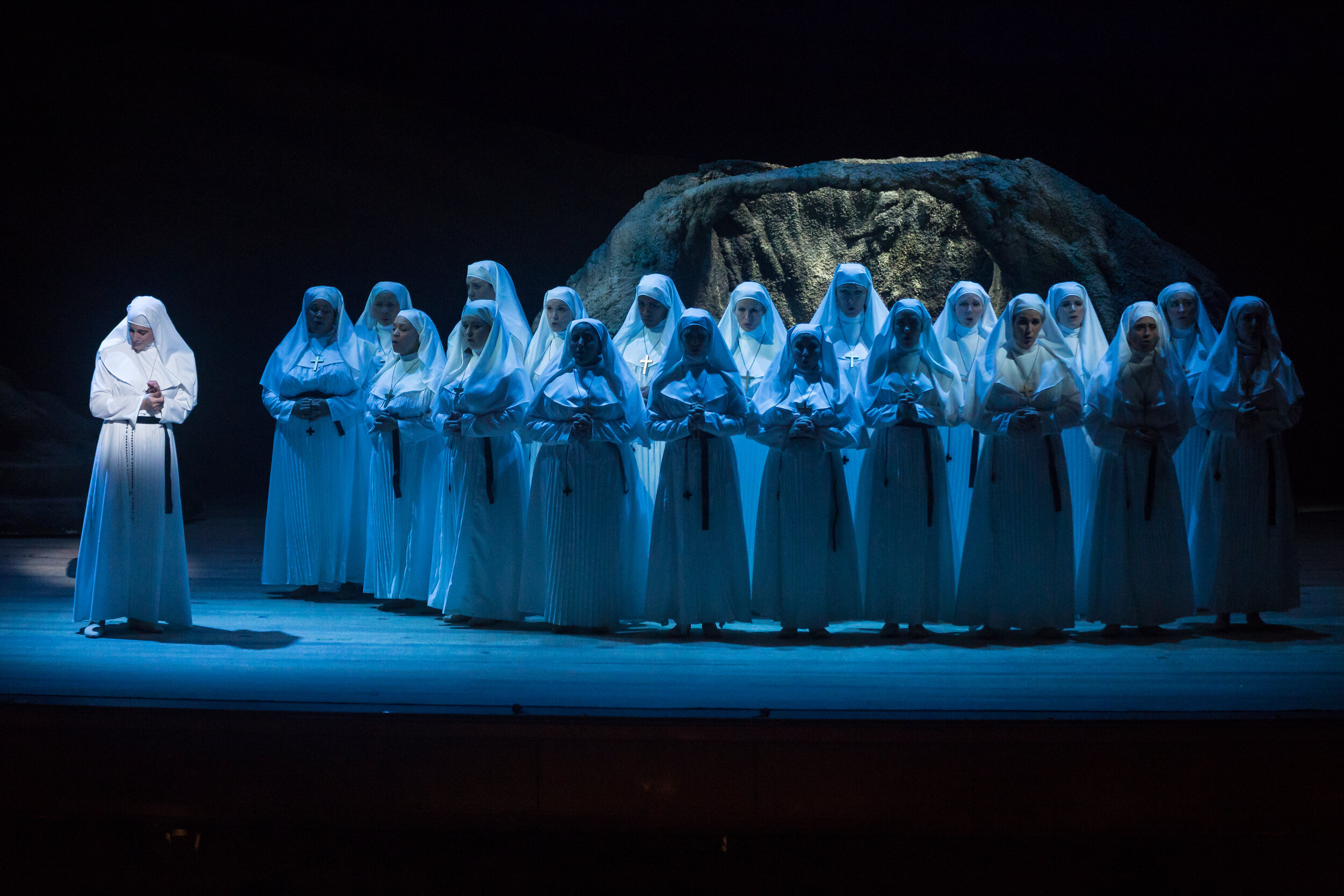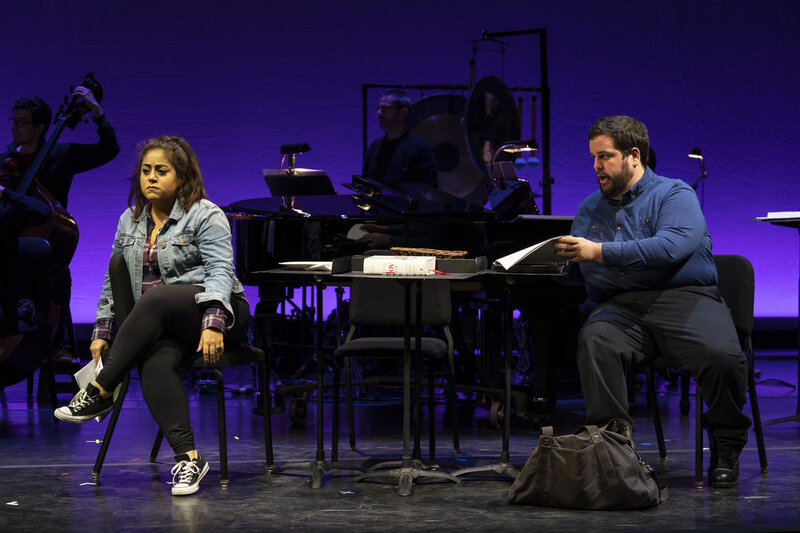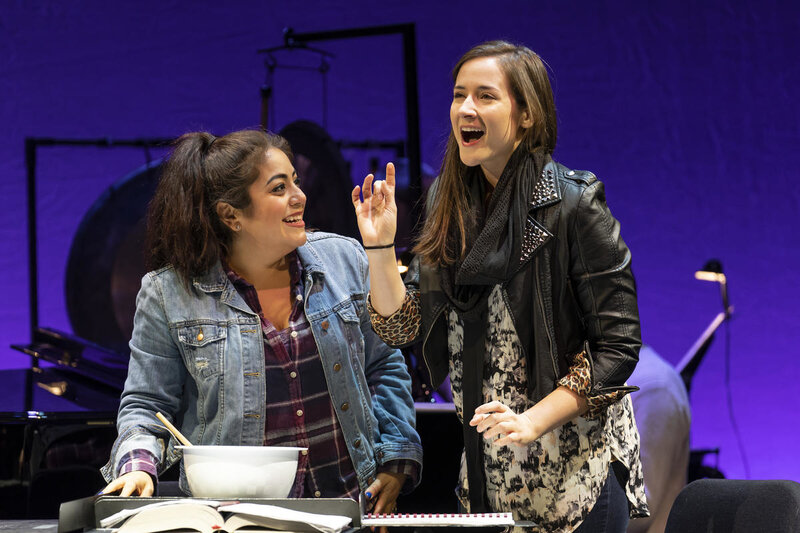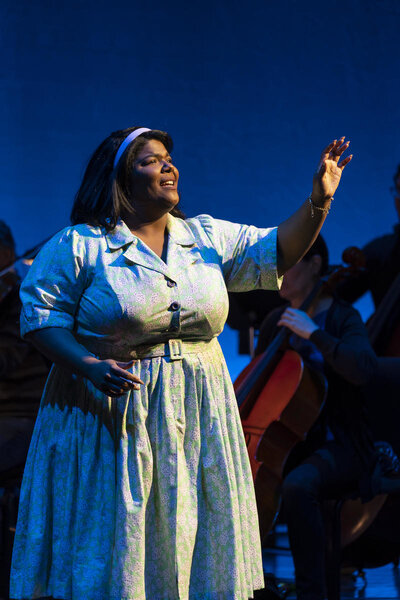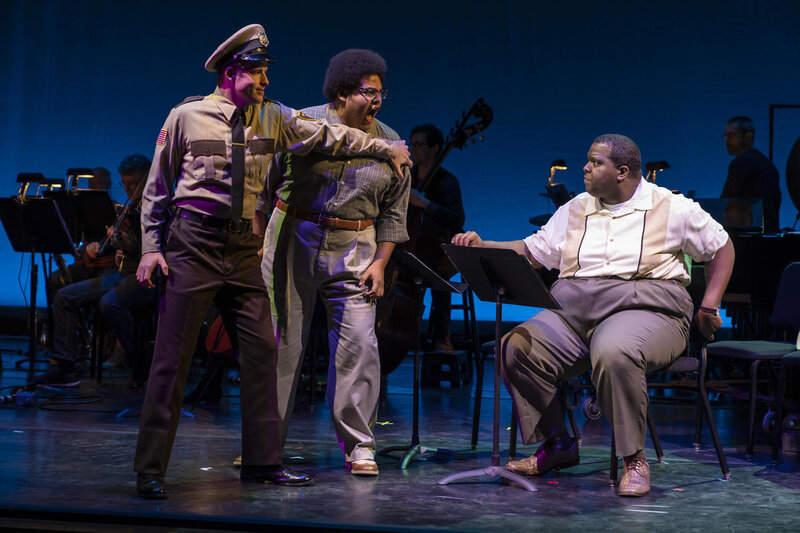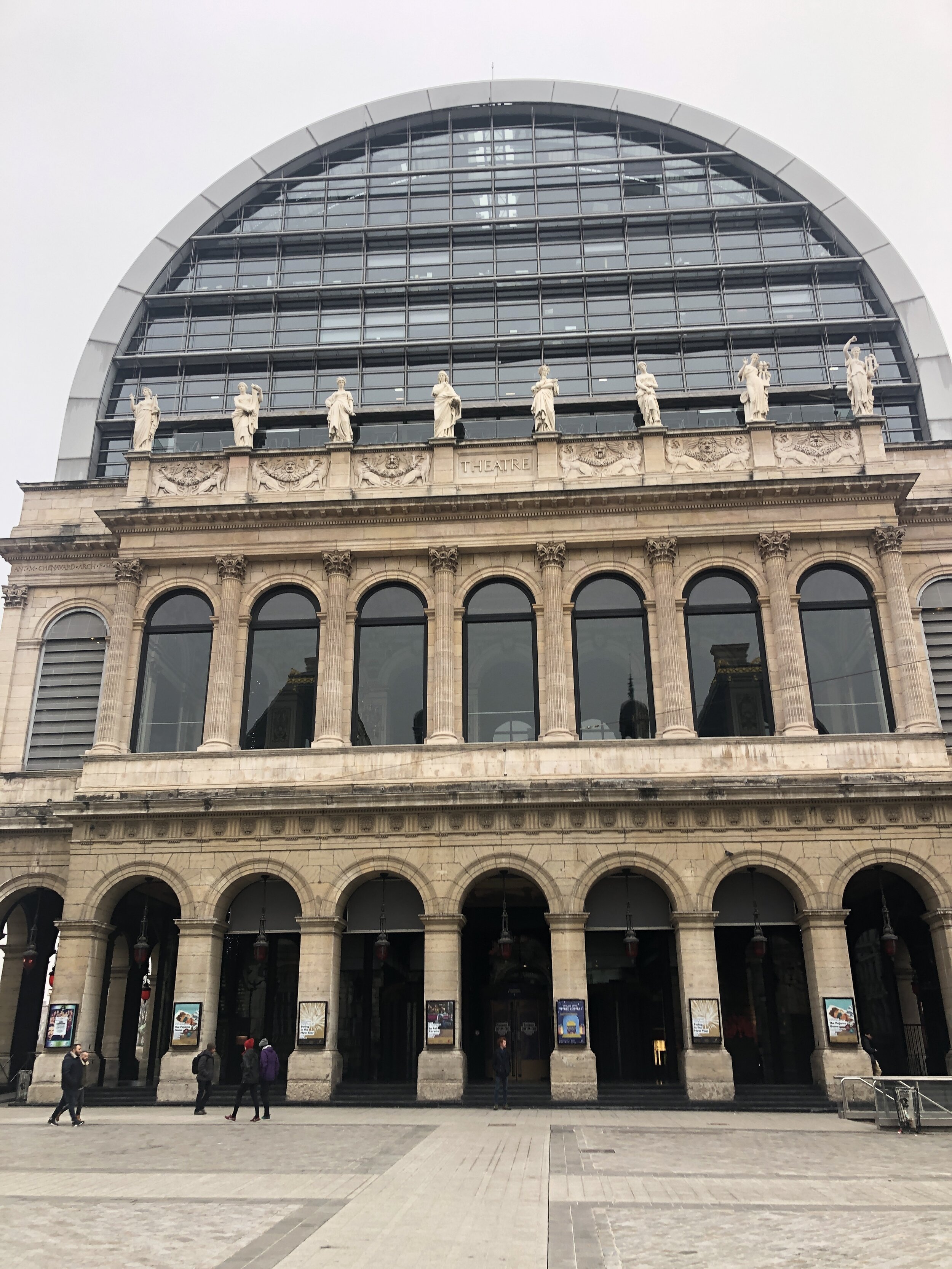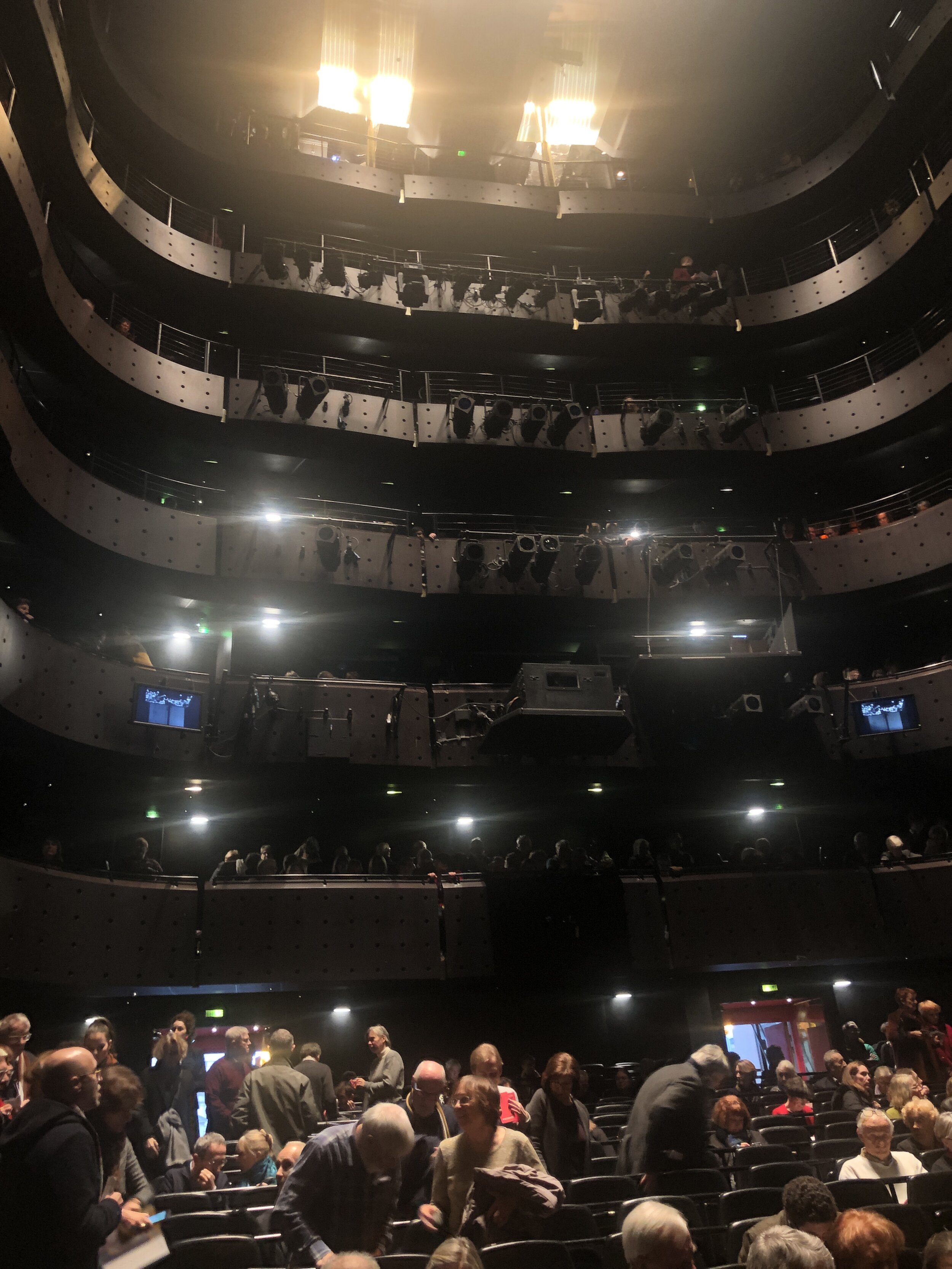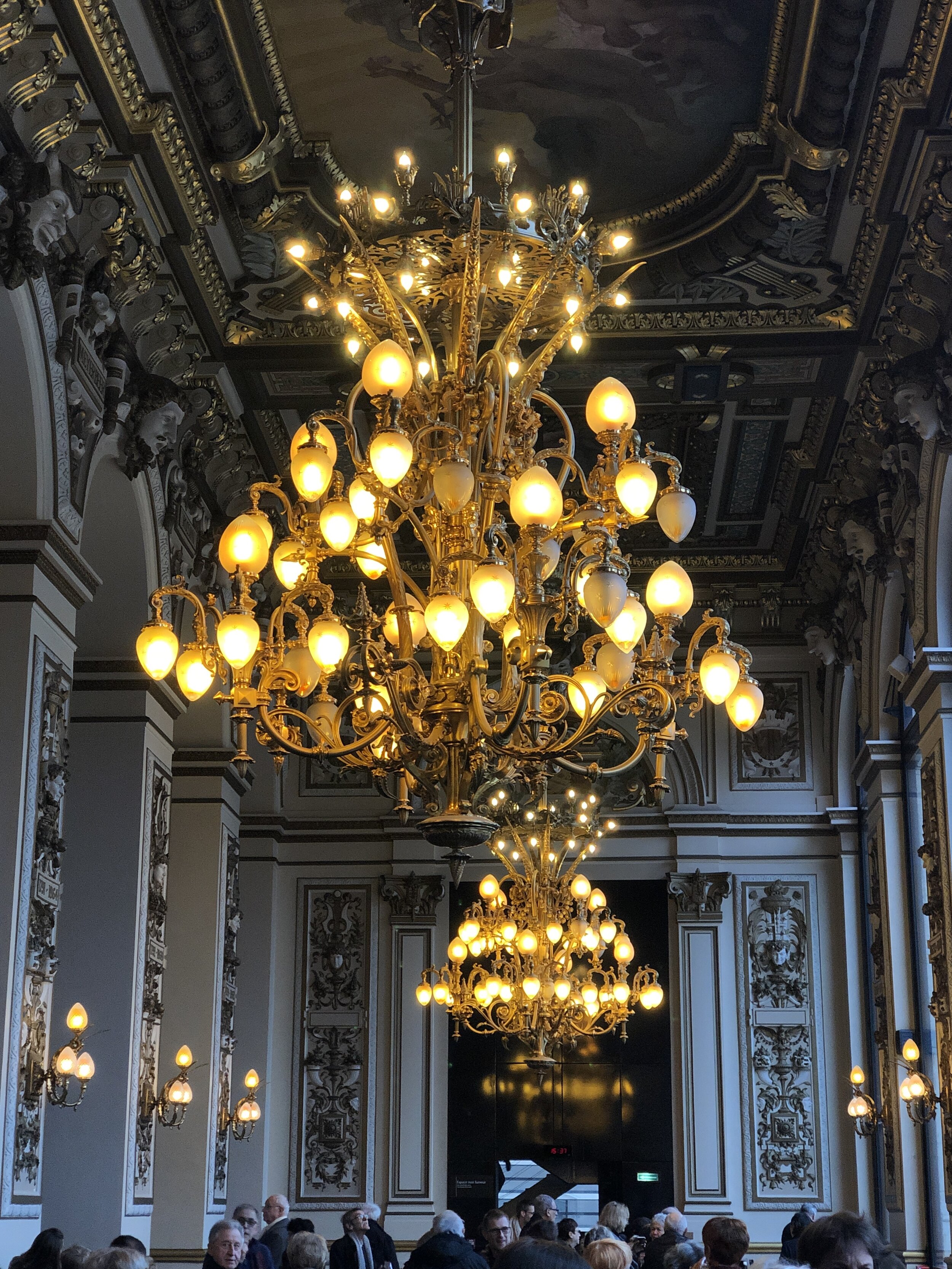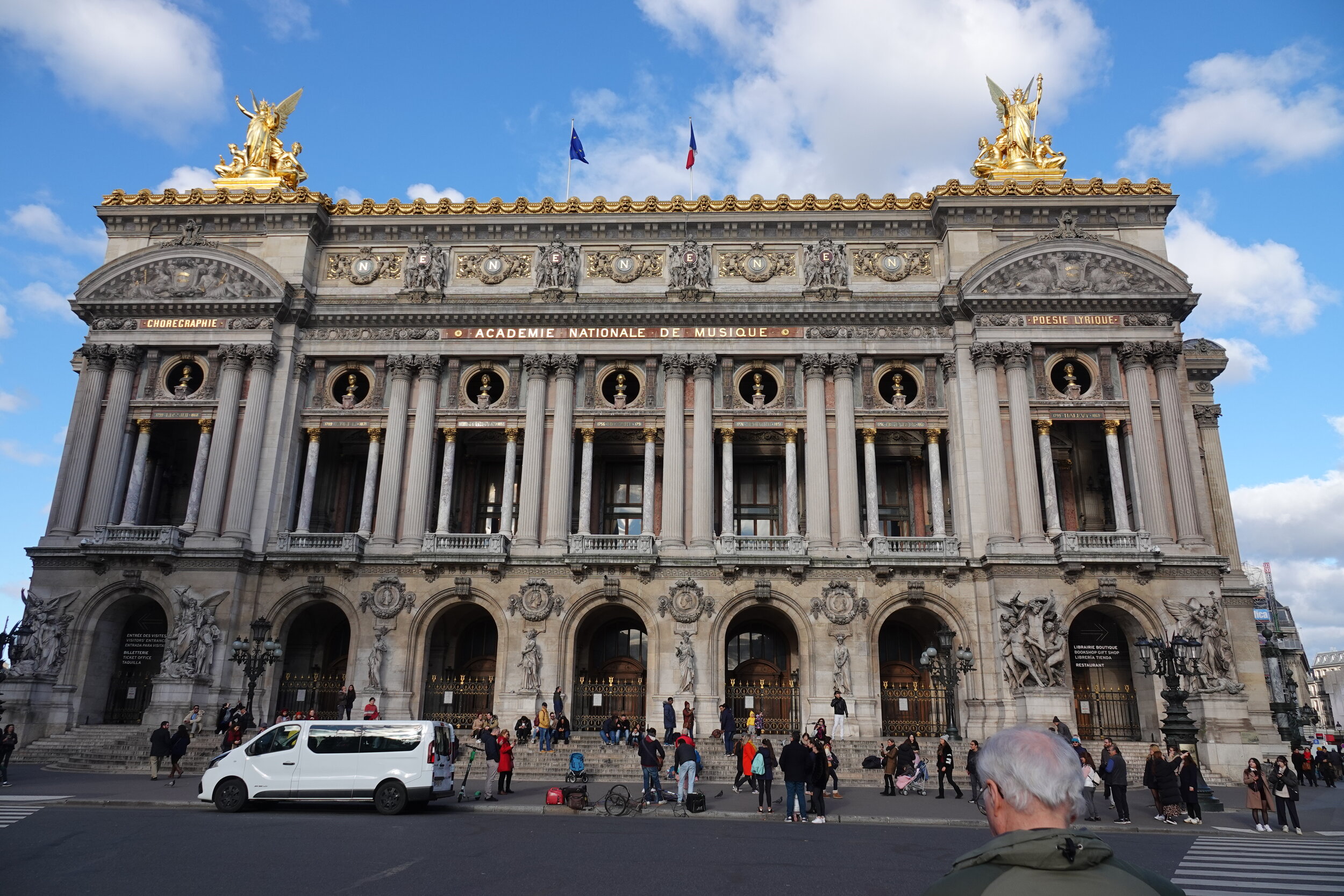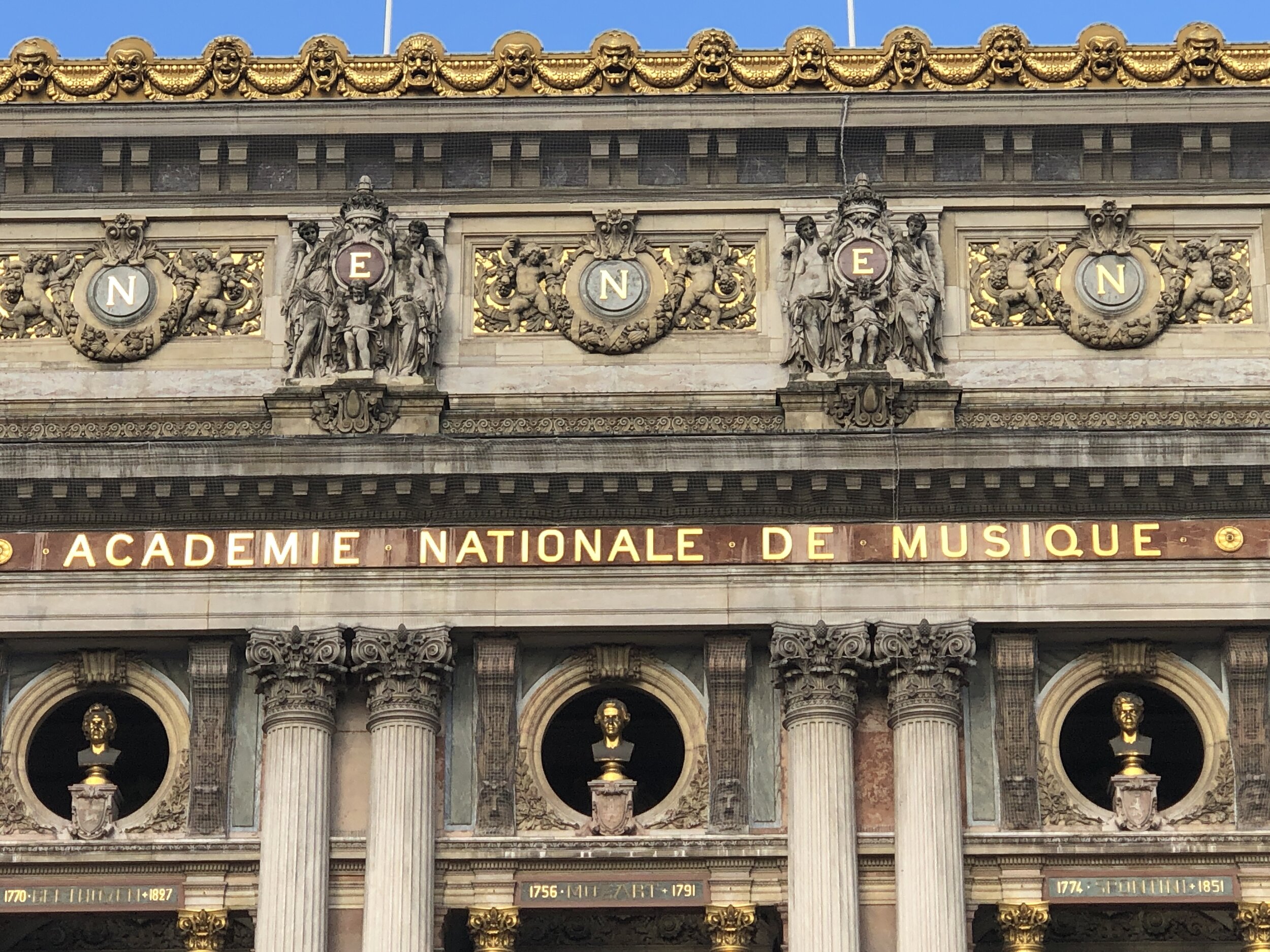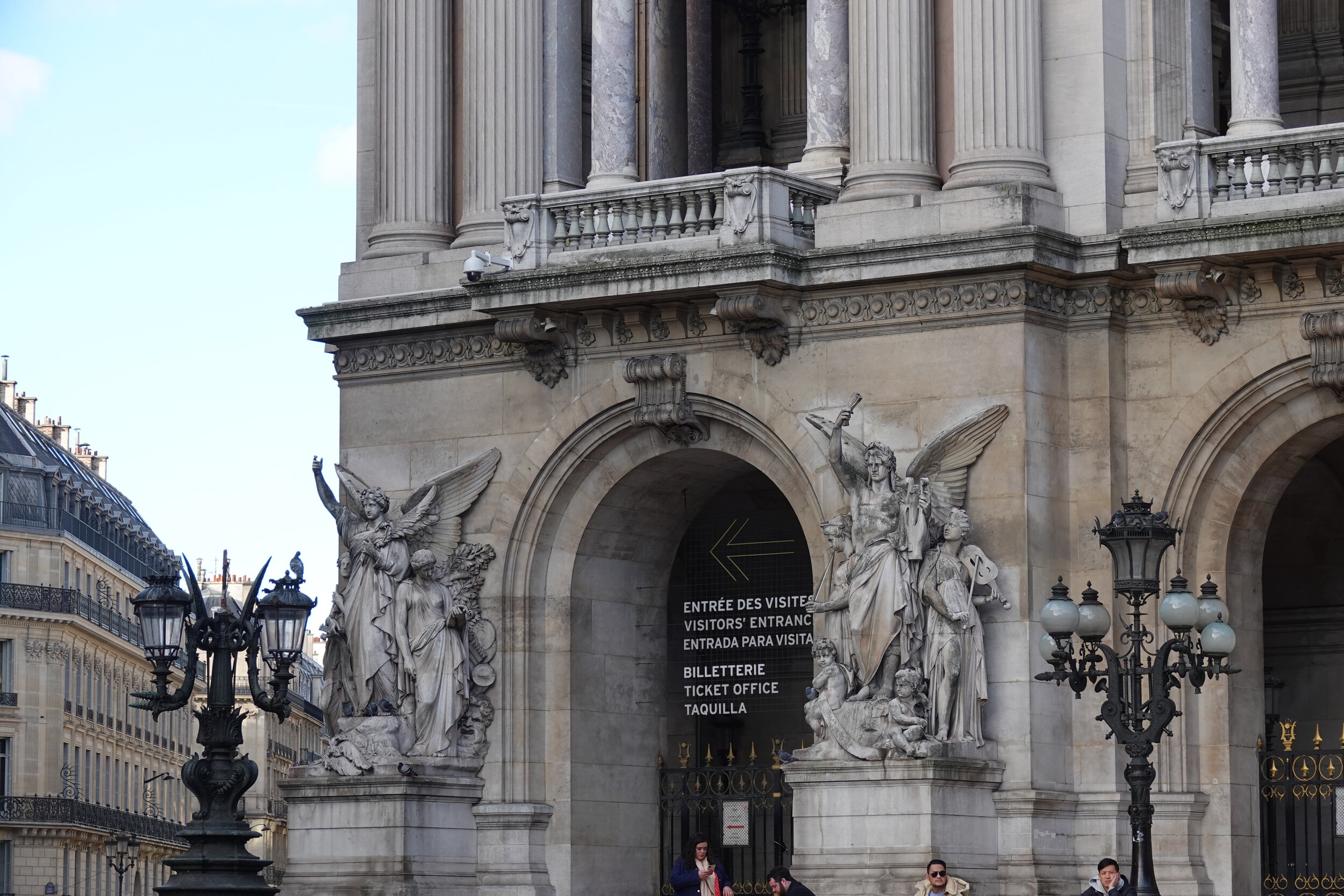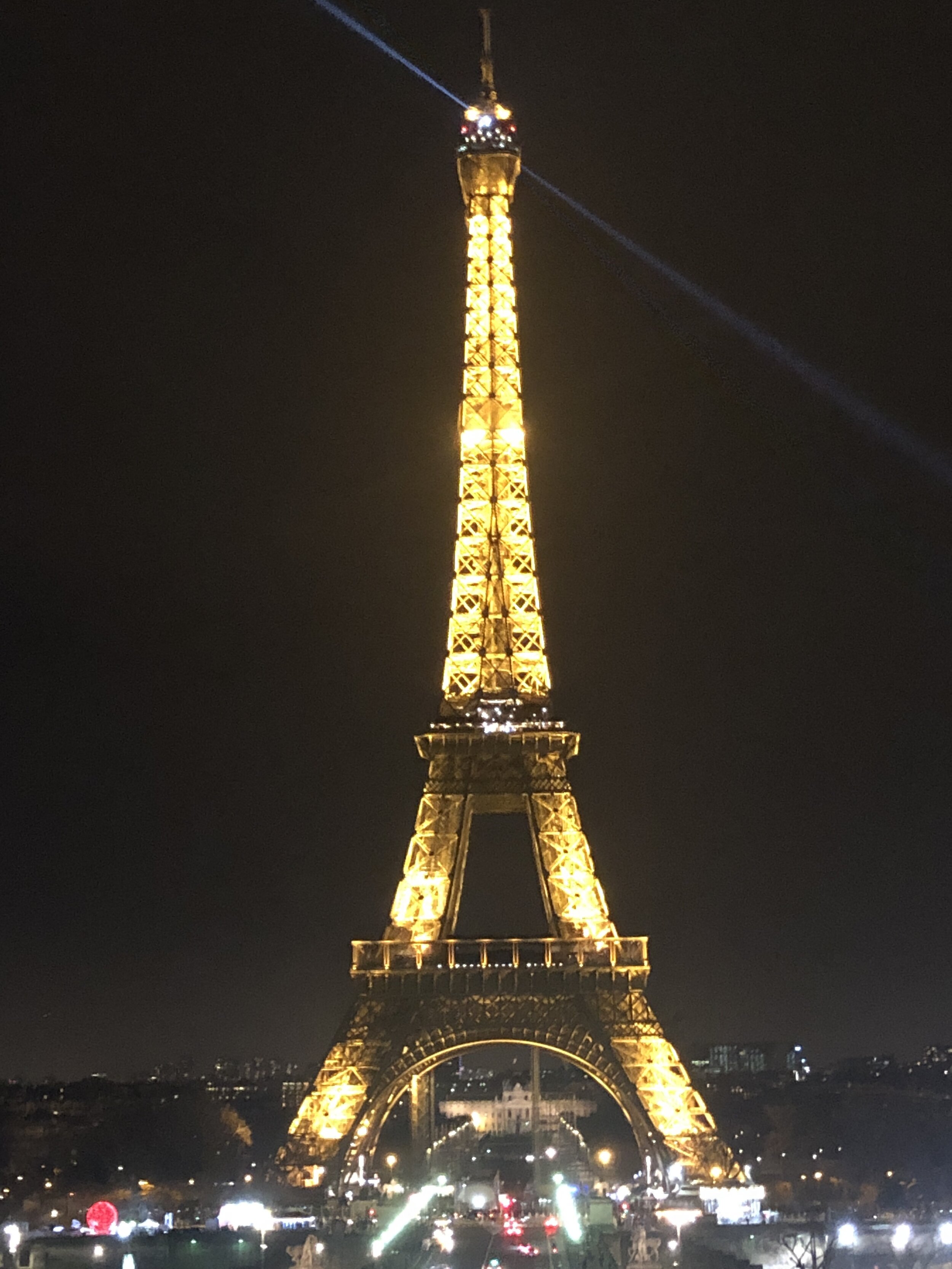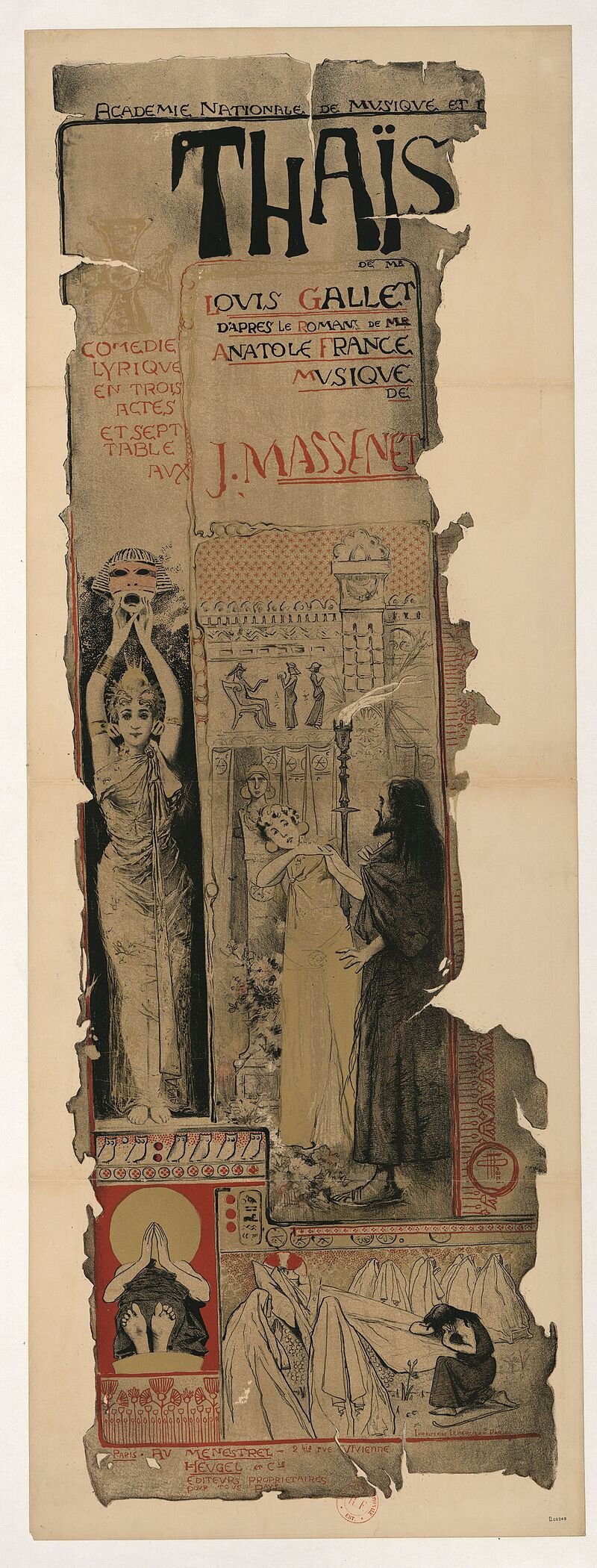Director Brown says that each new production, new set of performers, and new venue has added value to Opera Lafayette and contributed to its success. This journey officially began in 1995, when after finishing a performance in DC as a violinist in a chamber ensemble and with a child on the way, Mr. Brown decided to make his stand in DC. Rather than accepting a six-week gig in Amsterdam and Vienna, he made a successful application to the Corcoran Gallery of Art to present early French works using period instruments in the Salon Doré, a small performance venue, but a gorgeous room of inspiring 18th century French design and decoration; the advantage: come to see the performance and see the room also. His new company called the Violins of Lafayette was born. Vocal artists were included in the mix and an early chamber opera was performed. He soon recognized the overlap of dance with French music and vocal arts and added that aspect to their performances. As the mission began to focus more on opera, he made the decision to step away from the violin in 2001-2002 and focus on the role of conductor. The name was changed to Opera Lafayette for the 2001-2002 season (and Ryan Brown, the violinist, has reappeared in their performances from time to time).
The excellence and authenticity of their productions of French baroque opera even impressed the French, and in 2012, they were invited to perform in the Royal Opera House in Versailles. Over the years the DC venue has migrated from the Salon Doré to the Clarice Performing Arts Center at the University of Maryland to the Lisner Auditorim at George Washington University to the Terrace and Eisenhower theaters in the Kennedy Center, as performance needs and audience size required. OL performed Gluck's Orphée et Euridice in 2002 for the opening of the Clarice Performing Arts Center; it was there that OL performed through the 2006-2007 season and began its series of audio recordings for Naxos. Mr. Brown, who studied at Juilliard and lived for a while in New York City, decided that OL’s focus could also add something to the NYC music scene that would not compete with other offerings there, and in 2007, OL began giving performances in NYC as well as DC, the current practice today.
The Leonore Project is Opera Lafayette’s investigation into the musical and historical context of Beethoven’s only opera, Fidelio. In February 2017, I attended my first Opera Lafayette performance, and as fate would have it, this was the opera that began the Leonore Project, Pierre Gaveaux’s Léonore, ou l’amour du conjugal (1798). What is the connection of Gaveaux’s opera to Beethoven’s you might ask? Well, the story did not originate with Beethoven. He chose the libretto written by Jean-Nicolas Bouilly for Gaveaux; Beethoven’s librettist, Joseph von Sonnleithner, adapted Bouilly’s libretto for his opera. And what an effort that began. It took the great maestro ten years, including two additionally performed versions, known as 1805 and 1806, to arrive in 1814 with the premiere of Fidelio. Historical note: Beethoven preferred the name Leonore, but presumably the impresarios and lawyers prevailed so as to not have it be confused with Gaveaux’s opera.
Gaveaux’s opera is French and Beethoven’s is German. This period of history in Europe was turbulent. The storming of the Bastille had taken place in 1789; Napoleon took control of France in 1799 and moved to engage other armies on the continent. When Leonore premiered in Vienna, the city was occupied by Napoleon’s army. Feelings of nationalism and social justice were running high. Beethoven had strong feelings about these events. This is the backdrop for Bouilly’s story of a woman who disguises herself as a man in an attempt to get her unjustly accused husband out of a political imprisonment. I might add that when I saw these operas previously, I thought Gaveaux might have been more influenced by the romanticism of the story, the flavor of the outgoing century, and Beethoven more enamored of its issues of freedom and social justice entering the next century. Opera Lafayette wanted to look deeper at both these operas and the music of their day, and how the music of each composer was used to express these feelings, and deeper into how Gaveaux’s opera might have influenced Beethoven.
There is as yet no proof that Beethoven saw the musical score for Gaveaux’s opera. Yet, Director Brown finds elements in both operas sufficient to justify further investigation into similarities in each composer’s responses to the libretto. Another area of investigation that intrigued Mr. Brown and his team was a missing portion of a third-act aria for Floristan, Leonore’s imprisoned husband. He says that several musicologists have spent significant portions of their lives trying to track down and “rescue” this third act aria, the only part of the 1805 opera which has not survived. Working with Mr. Brown and his colleagues, noted conductor and musicologist Will Crutchfield has re-imagined the missing section of this aria using sketches and existing performance materials. This rescued aria written in the spirit of Beethoven will be performed for the first time in OL’s Leonore. That adds a few notes of interest, doesn’t it?
Having attended a performance of Leonore (1805) in concert, I greatly look forward to this rare opportunity to see Leonore staged. Leonore is longer with three acts to Fidelio’s two, and they have different overtures. To get another gauge on how different they might be, I asked Mr. Brown how much new music would a soprano familiar with the role of Fidelio have to learn. He replied that there are two new recitatives and a second act duet with Marcelline, the jailer’s daughter, that would be new. So, they are substantially the same, but what’s different is still Beethoven’s and worth hearing. He also said that the voice requirements for the two versions are not quite the same. And of course, OL performances will further be differentiated by OL’s using period instruments. For Gaveaux, OL had 33 instruments in the pit and for Beethoven there will be 44. Happy Birthday, Maestro!
If leaders are made, not born, surely the making begins at birth. Mr. Brown’s mother played the piano and his father was both a pianist and a conductor who led the Santa Rosa Symphony in California for 38 years. Mr. Brown says that he was not originally interested in conducting or opera, that the family joke he used for many years was that he would not conduct until his father stopped. This family background not only paved a musical and conducting path for him, but also provided him with a critical element for his future success; he learned first-hand at a young age how to manage a musical group. Opera seems to have infected him much later on its own.
Conductor Brown gave me a demonstration. In our conversation he said that for singers he not only looks for talent and craftsmanship, he also wants singers that will add to the overall group. For example, when he auditions potential singers, he is sensitive to whether they are open to suggestions for singing a piece. After lunch, he invited me to sit in on the rehearsal he was conducting while Floristan’s new aria was being worked on; meant purely as a treat, it also became a lesson. As I watched him work with tenor Jean-Michel Richer who will play Floristan, it was clear that each person came at the aria from a different perspective in getting the performance of the aria perfected. There were discussions of notes and their grouping in the score of concern to Director Brown, and where the emotion was strongest in the aria, of concern to the singer; there was give and take in all of this. The need for being able to work as part of a team effort was readily apparent. Oh, and the parts of the aria I heard, made me want to hear more.
This management insight he gained growing up in a musical family was one of many reasons that Director Brown gave for Opera Lafayette’s success. The first reason he gave was perseverance, perhaps more a reflection of the effort it required. He followed that entry in his list by suggesting a strong focus on the mission, attracting good, dedicated people (staff and performers and a network of expert musician friends and musicologists), venues that had special appeal, and an audience in the DC area that would support performances. He went on to include the availability of excellent voices, and not the least, patrons who supported the mission. I also suggested that the quality and authenticity of Opera Lafayette’s productions were also factors and so was finding a niche. There are always customers for quality; and what you get with Opera Lafayette, you don’t get elsewhere. He also was quick to point out that OL’s effort merging the wills and talents of so many people always provided a sum greater than its parts. That might make a good logo – Opera Lafayette, the sum greater than its parts.
What about the future? Opera Lafayette is stretching its mission a bit going forward. Venus and Adonis, which opened this season is an English opera, and Beethoven’s Leonore is a 19th century German opera. As shown by this season’s offerings, we can expect the inclusion of operas beyond France and venturing into the 19th century, as well as the 17th and 18th. The focus, however, will remain on modern premieres of rediscovered masterpieces using musical instruments from their period, and maybe, some additional opera rescues. Makes me look forward to their performances even more, and I have attended almost all of them since my first one.
I have stated before that I no longer need to look ahead to see what Opera Lafayette is performing to make a decision on whether to attend. I just go. I probably won’t be familiar with the work anyway, yet I can depend on Opera Lafayette to make it interesting and to bring the quality and the enchantment, providing a delightful evening… like no other.
The Fan Experience: Check this link for tickets to Leonore at 7 pm on Wednesday, February 26; last time I checked, tickets were available but were growing scarce. The March 2 performance in NYC will be held at 7 pm on March 2 in the Kaye Playhouse at Hunter College; note: a second performance for the NYC venue has recently been added for 7 pm on March 4.. A pre-performance talk will be given by Director Brown and musicologist Will Crutchfield at 6 pm prior to all three performances. Being somewhat of an opera junky, I try never to miss the pre-opera talks, but these discussions, with Director Brown talking about the Leonore Project and musicologist Crutchfield talking about Floristan’s rescued opera, should be especially interesting.
There will be a preview performance of Leonore at the Bowie Center for Performing Arts on Sunday, February 23 at 3 pm. Opera Lafayette’s performance of Gaveaux’s Leonore, ou l’amour d conjugal was filmed and is available on DVD from Naxos, if you’d like to add to your Leonore collection.
Opera fans in the DC area will have a chance to compare Leonore and Fidelio. Washington National Opera has just announced performances of Fidelio in Oct/Nov this year.






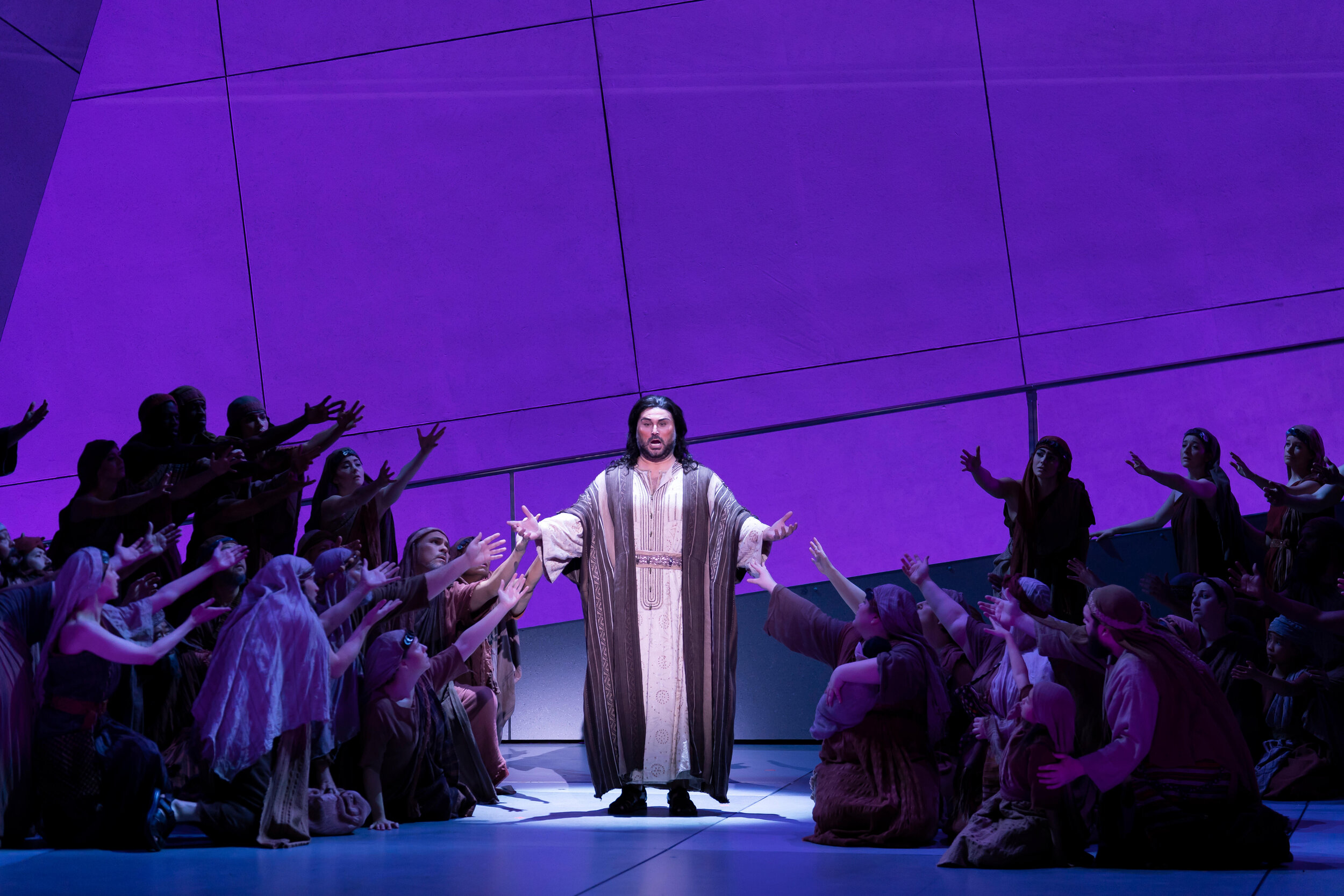


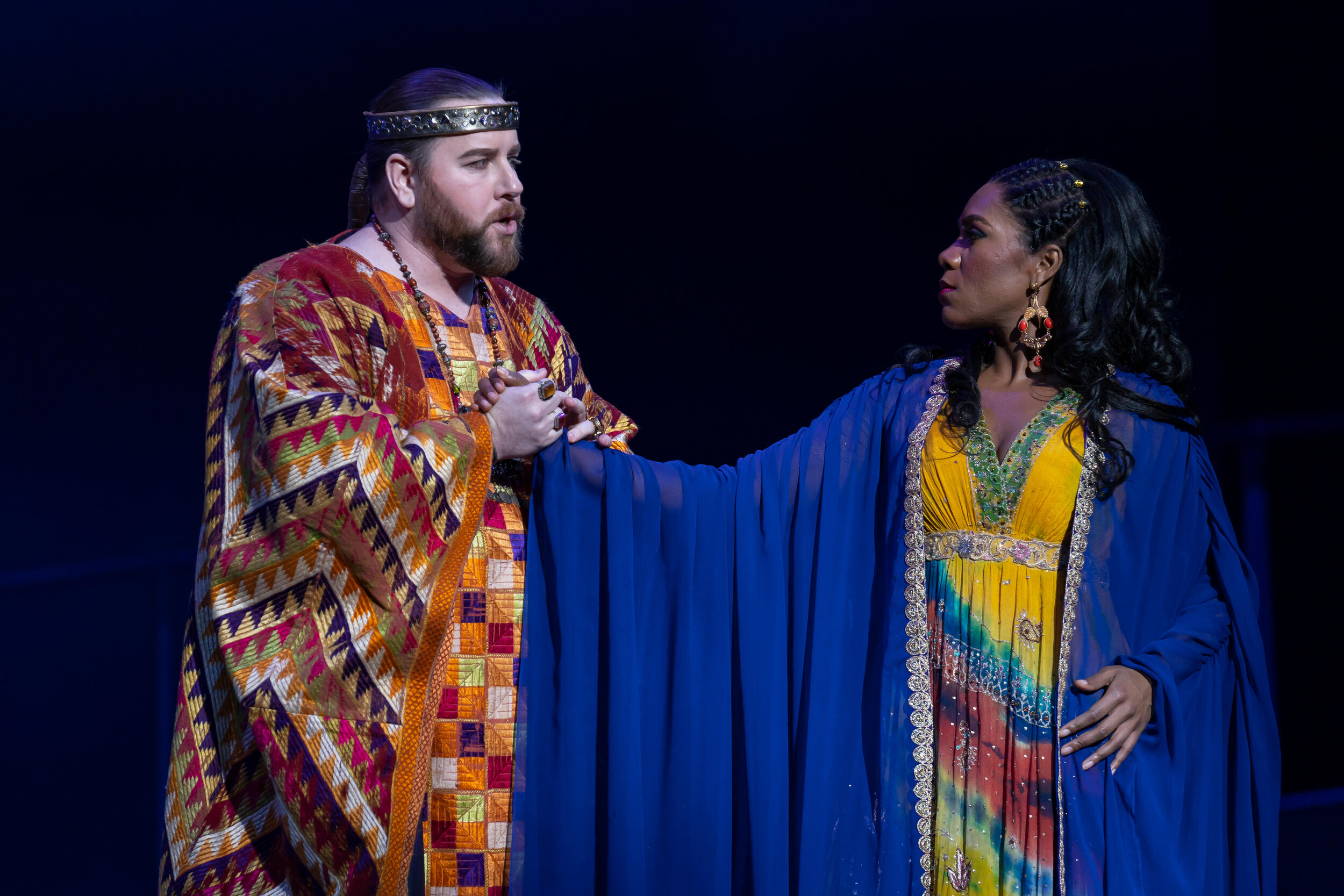
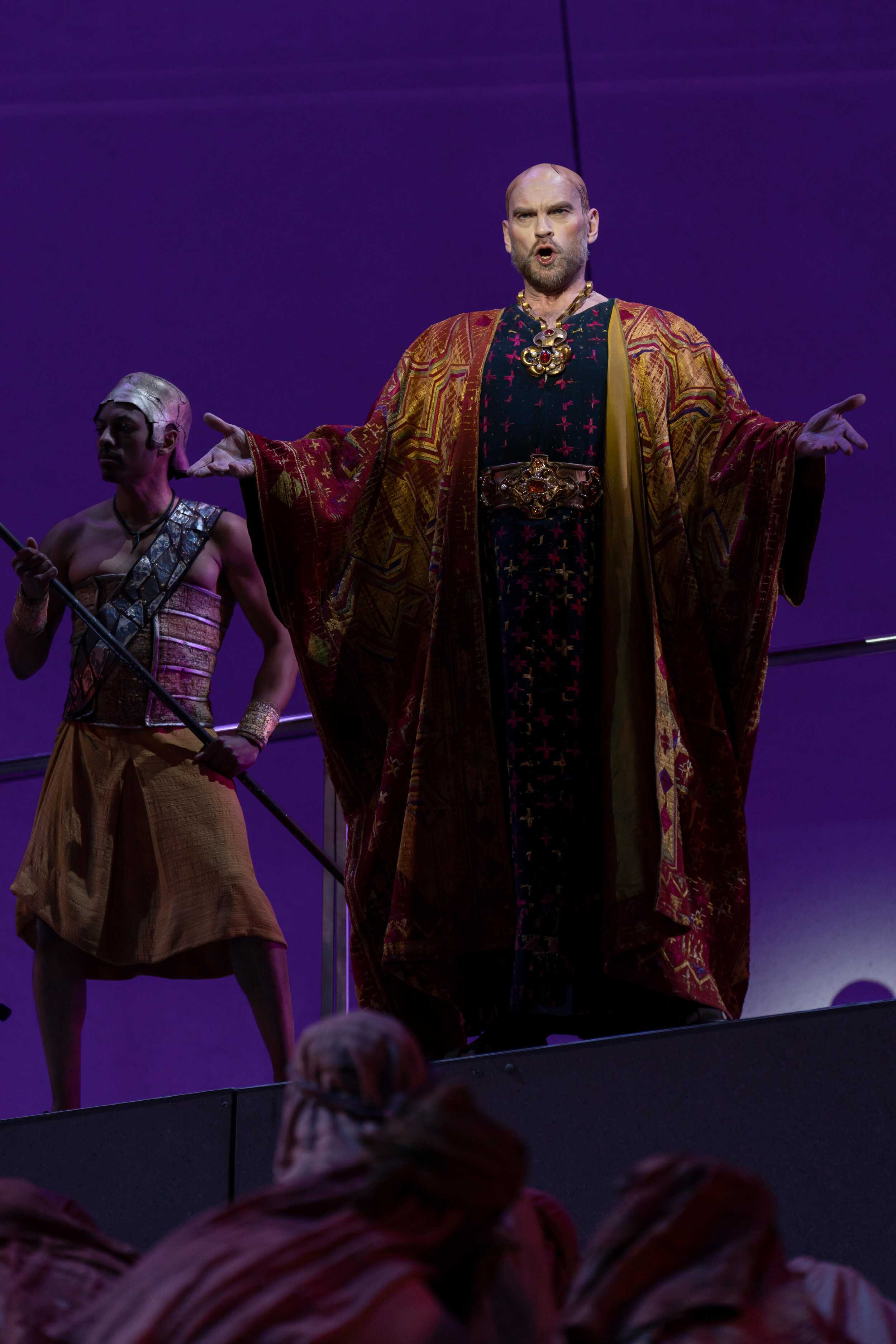




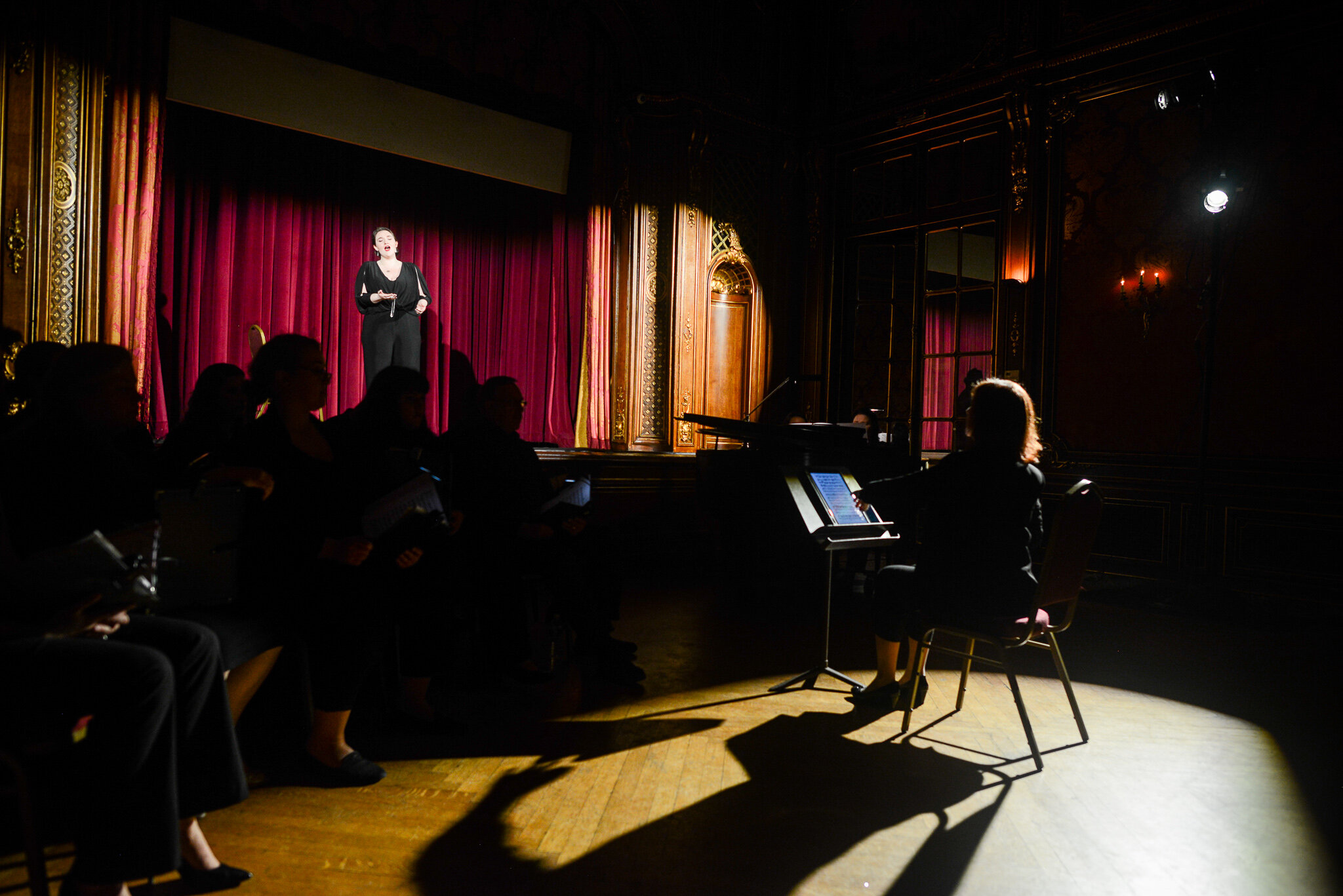
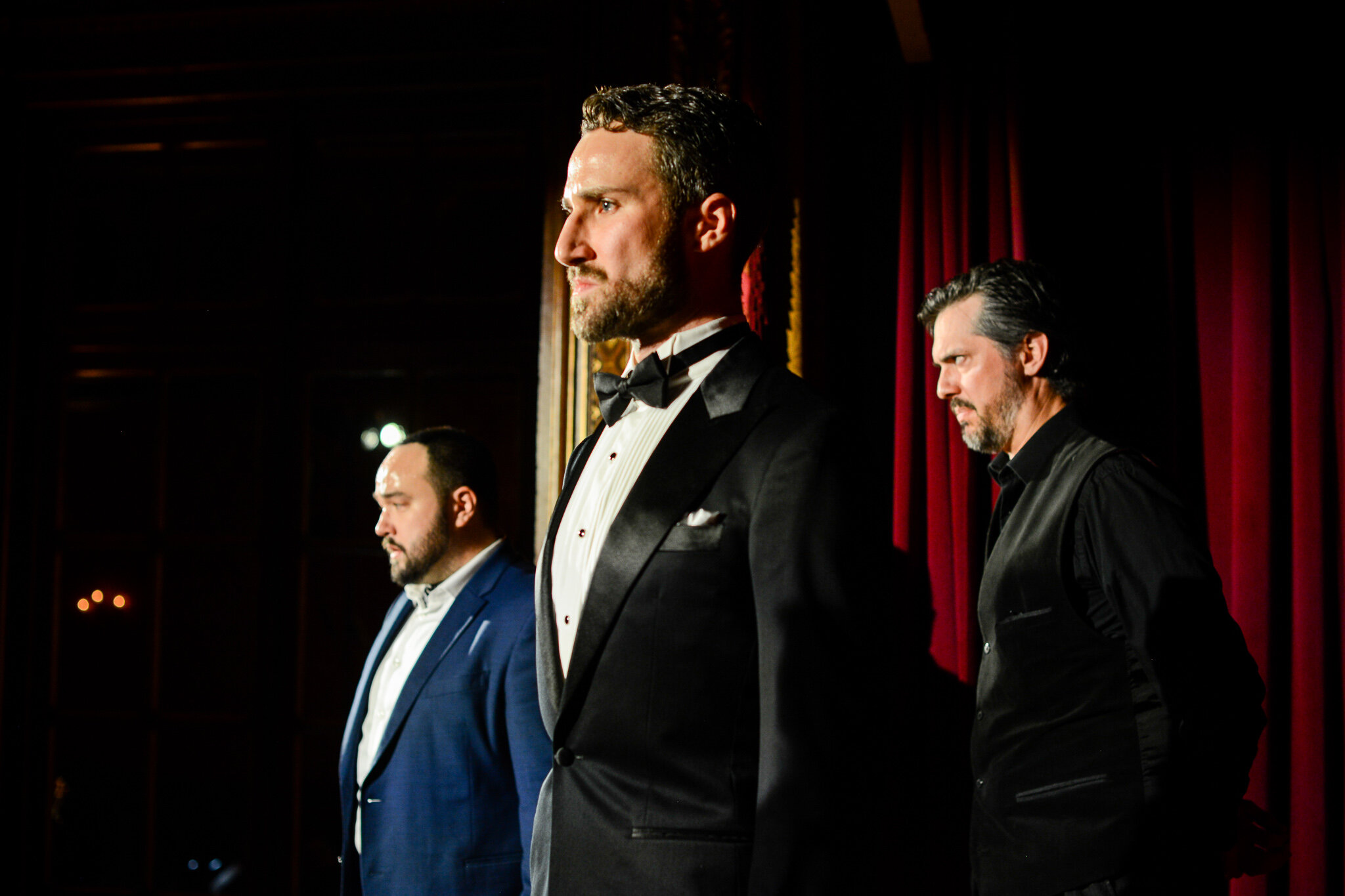
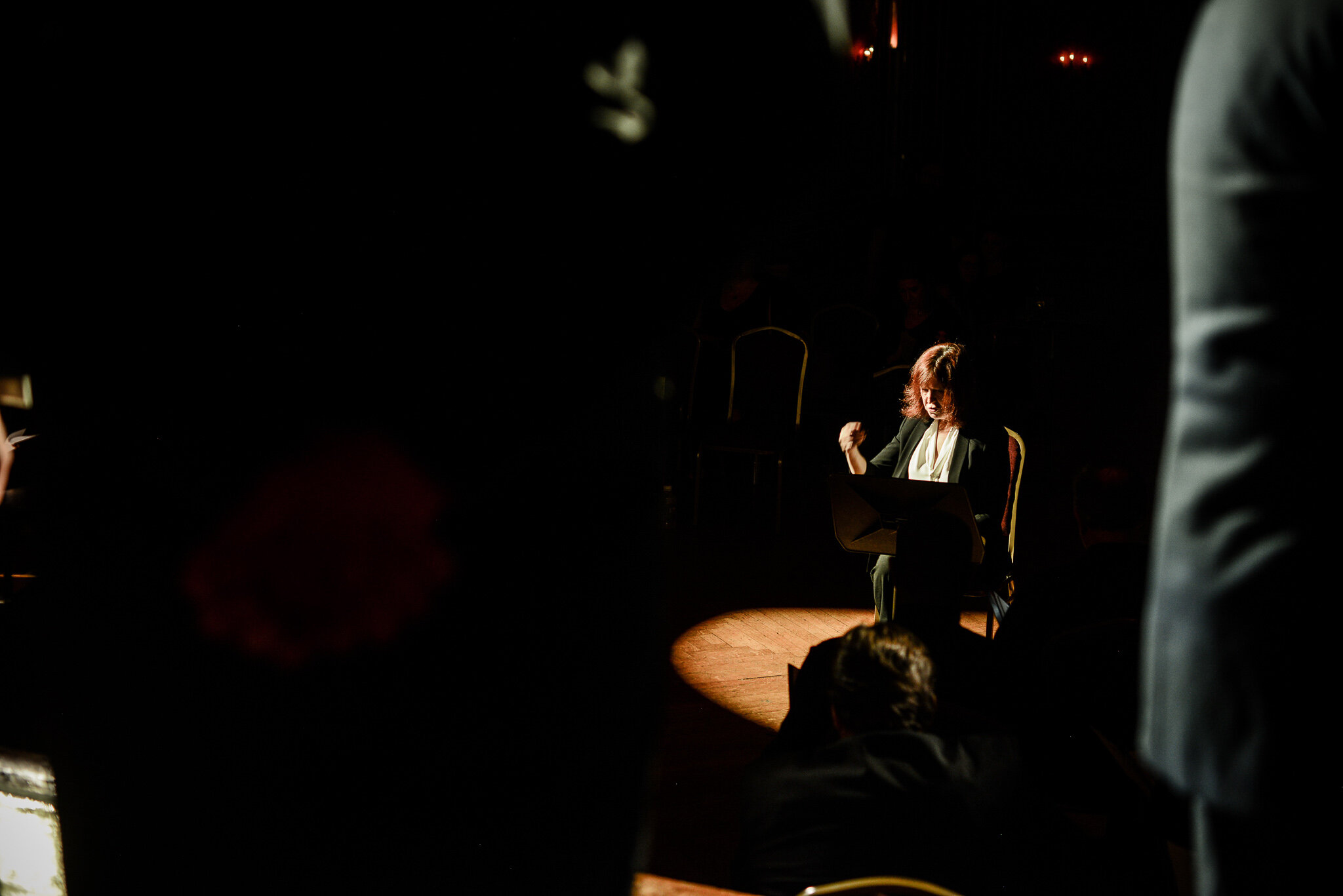
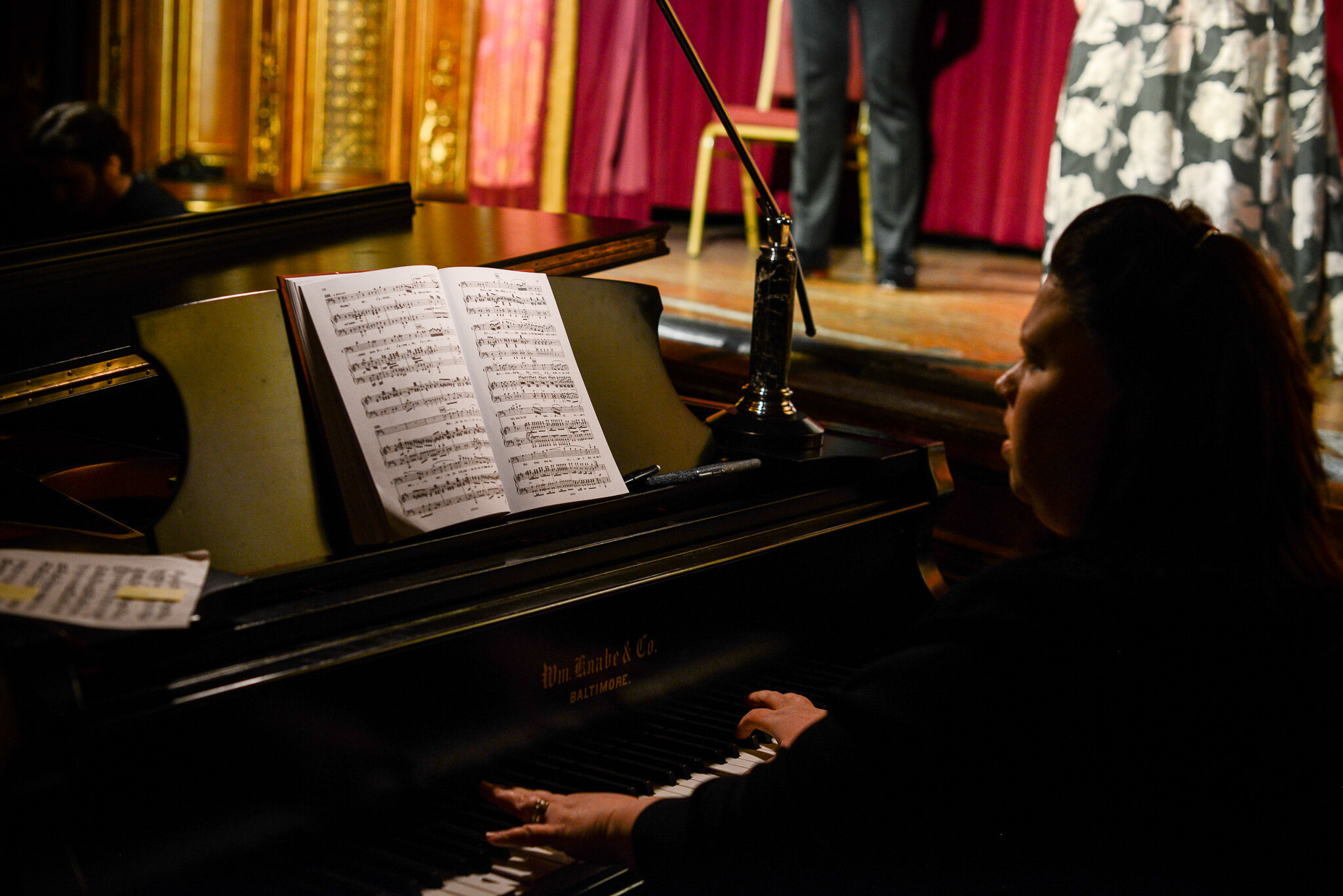

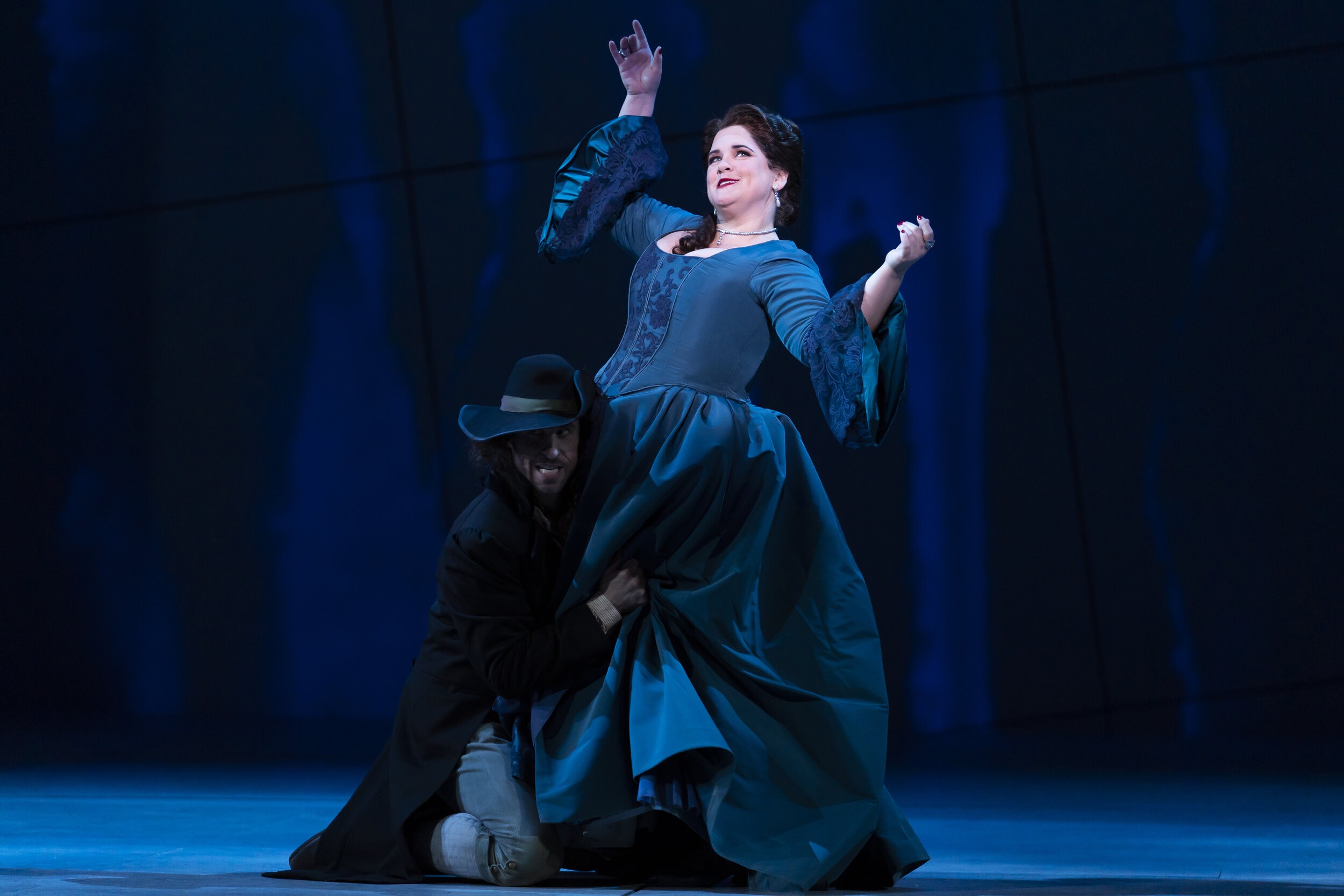
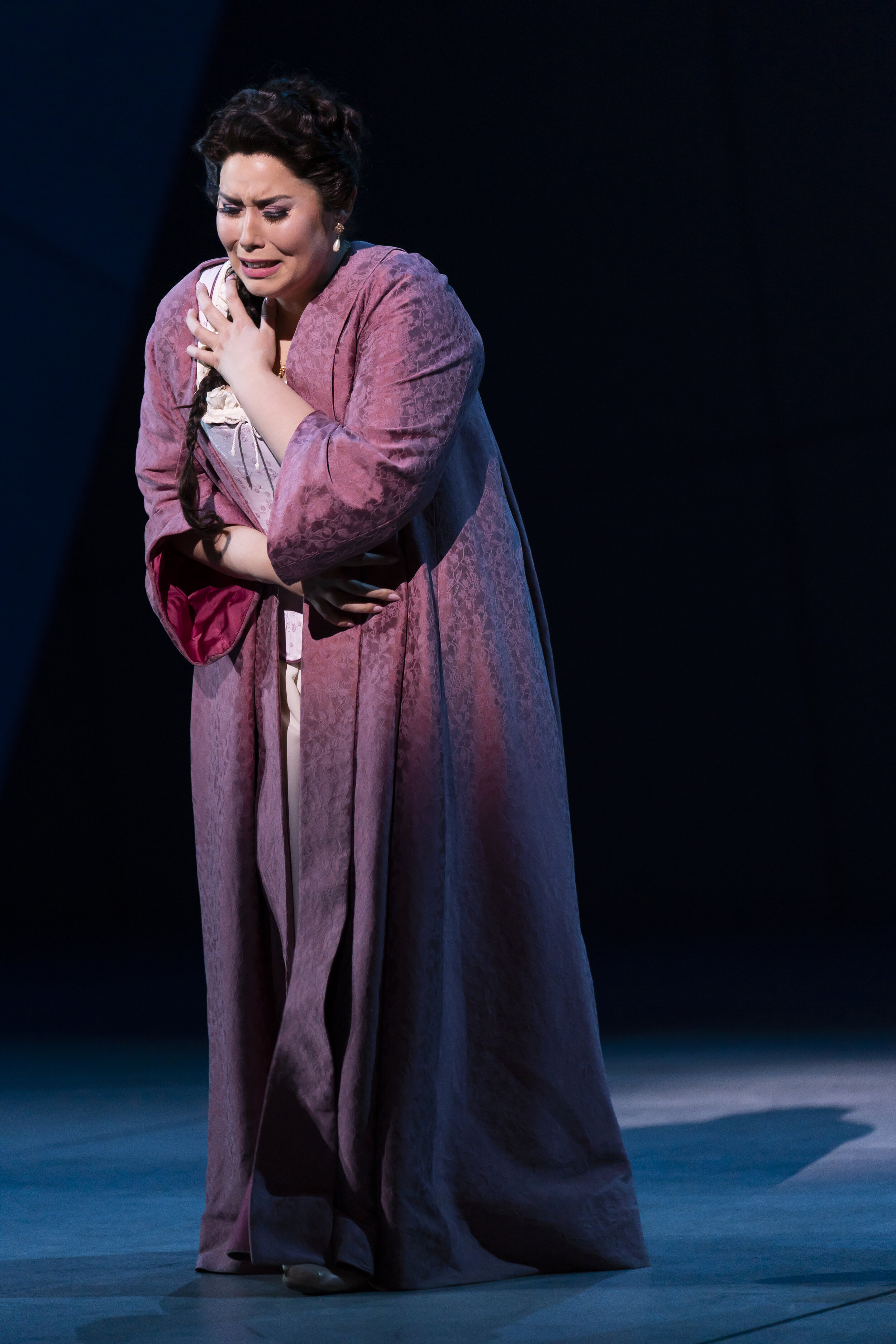
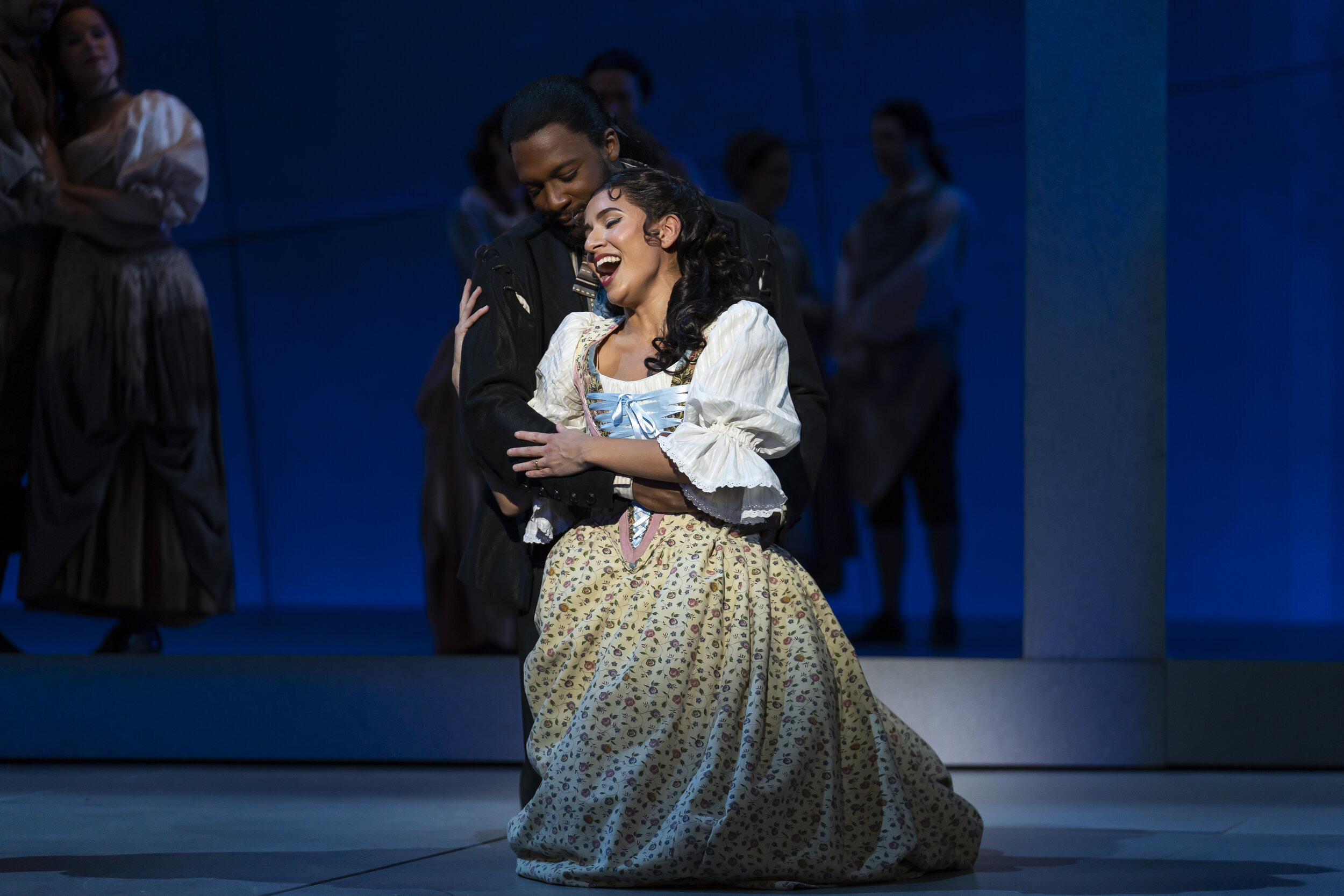
![[l-r] Ryan McKinny (Don Giovanni), Norman Garrett (Masetto), Kyle Ketelsen (Leporello) in Don Giovanni -photobyScottSuchman .jpg](https://images.squarespace-cdn.com/content/v1/566de1d6df40f3a73187d87e/1583189664813-BV9L998YP5K7V8QT559C/%5Bl-r%5D+Ryan+McKinny+%28Don+Giovanni%29%2C+Norman+Garrett+%28Masetto%29%2C+Kyle+Ketelsen+%28Leporello%29+in+Don+Giovanni+-photobyScottSuchman+.jpg)

